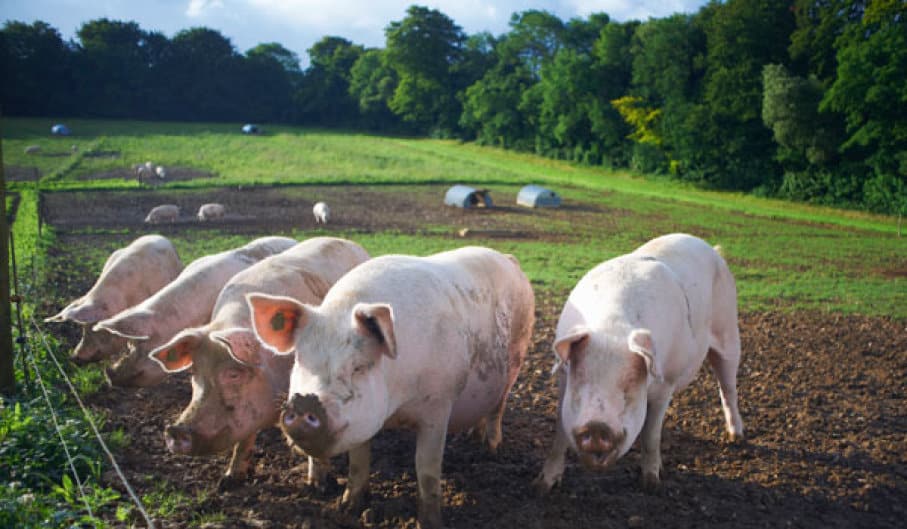If you would like to join a team working to increase the efficiencies of the pork producer world, and address the growing threat of climate change, there are a number of Smithfield Food jobs available to assist you in making an impact.
Up until only a few years ago, if anyone had said “I’m going to turn pig poo into fuel,” they would have probably been laughed out of the room.

Thanks in large part to recent technological advancements, this concept is no longer the punch line of a corny joke.
Large scale companies are going all in on this new method of generating renewable energy. While simultaneously dealing with the massive amounts of waste created during pig farming. It’s a win-win.
Smithfield Foods and Dominion Energy to Produce Energy from Pig Manure
As reported by the Washington Post in November 2018, the world’s largest producer of pork executed a partnership with an energy company to start turning pig manure into usable fuel.
Smithfield Foods, which is known for its distribution of pork products, forged an alliance with Dominion Energy, an electric and gas company. The purpose of this partnership was to turn methane gas (a by-product of Smithfield’s hog lagoons) into energy that could be used as an effective answer to climate change. And throw a sizeable amount of extra income in both companies’ pockets.
Through these efforts, the pork producer aims to reduce its carbon footprint and help address the imminent threat facing the planet. Climate change is something that has now caused a record number of Americans and world leaders to be concerned with (more so in some countries than others…). As the ramifications on the global economy and the quality of life for people worldwide is affected.
“This effort is focused on the waste aspect in our endeavor to divert an inevitable part of the waste stream into something usable, that has an economic benefit and, in the process, reduces our carbon footprint.” Smithfield’s CEO Ken Sullivan said to the Washington Post in November.
Smithfield along with Dominion Energy plans to spend $250 million over the next decade to cover the former’s hog lagoons in three states, namely North Carolina, Virginia, and Utah.
The plan is to capture the methane gas that is produced by these hog lagoons and channel them into the pipeline network of Dominion Energy, where it will be processed into renewable natural gas and sold back to the grid.
By doing so, both companies aim to reduce the amount of carbon dioxide produced by fossil fuels. As the WP report noted, methane plays a significant role in climate change by being 25 times more potent than carbon dioxide as a greenhouse gas.
This is Not the First Rodeo for Smithfield Foods
Smithfield Foods isn’t going into this project without prior experience. In fact, the company is so dedicated to the cause of renewable energy that it has its own division by the name of Smithfield Renewables.
Under the umbrella of Smithfield Renewables, the company has already been a part of a pilot program in North Carolina that used anaerobic digesters to capture and clean the biogas produced by its hog farms. The processed biogas was then turned to renewable natural gas through a central processing plant.
That project, dubbed as Optima KV, was handled by OptimaBio, LLC, which specializes in turning pig manure to renewable energy and has an associated domain aptly named Pig.Energy.
With the experience gained from its efforts with OptimaBio, Smithfield plans to reduce greenhouse gas emissions significantly by 2025.
The new project will still use OptimaBio’s digester mechanism, but the facility that will be turning the biogas into renewable, natural gas is Dominion Energy’s plant. Which will receive the captured biogas through pipelines or trucks.
Smithfield believes that Dominion’s infrastructure will help eradicate any issues in cleaning and processing the gas that its pilot project faced previously.
Once the project is fully functional, the company hopes to capture more than 85,000 metric tons of methane in a year. The reduction in carbon emissions resulted by this would be equivalent to the carbon emissions of around 700,000 homes.
Whether Smithfield fails or marks this project as a success, it is clear that it will pave the way for other companies to learn a lesson or two from its efforts. Ideally, this sparks and catalyzes more entities to down similar paths and contribute to the reduction of greenhouse emissions, a necessity in this dire time of climate change.

